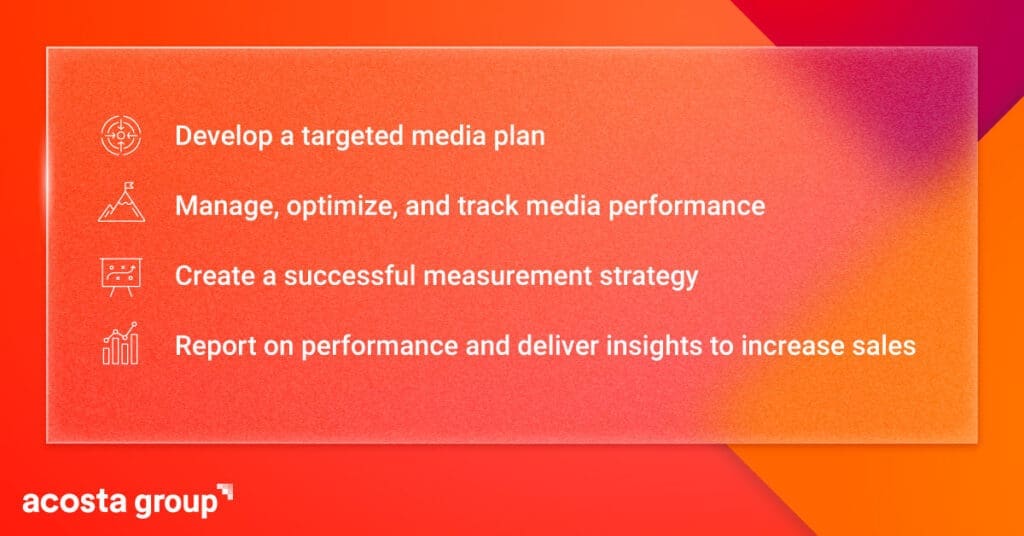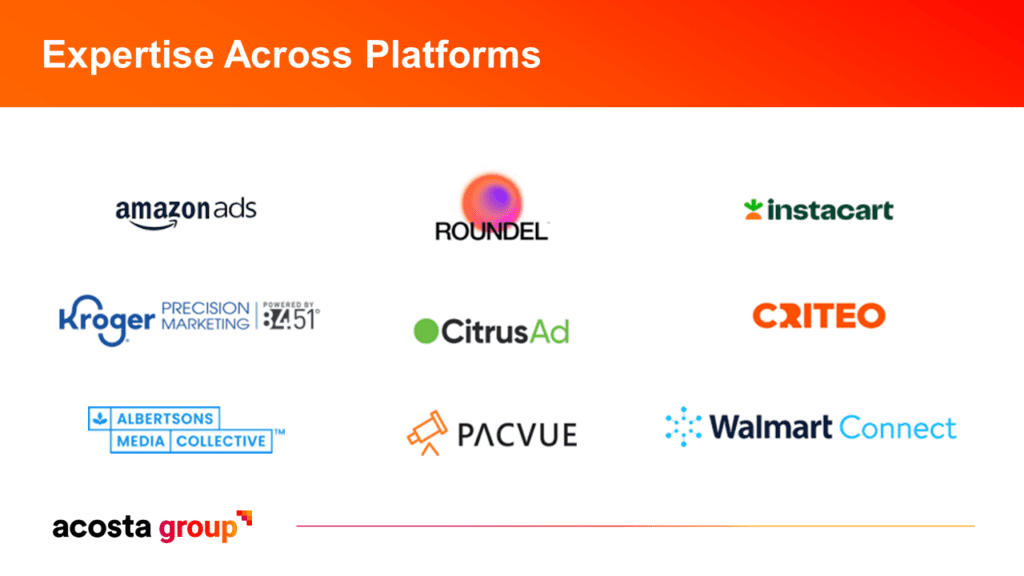Maximizing ROI With A Comprehensive Commerce Media Strategy

By Cody Tusberg, SVP, Retail Media & Jamaal Hackett-Cook, VP, Strategy, OeP
While optimizing and syndicating digital product content is an integral part of your digital commerce strategy, it is only half the game. Now that your omnichannel strategy is in place and your product display pages (PDPs) are compliant, looking and functioning correctly, it’s time to ensure you have an effective digital marketing strategy to drive traffic and conversion.
There are a variety of channels to choose from as you build your plan, and a common dilemma brands face is where they should spend their next dollar that will be incremental to current sales. With the lack of clear-cut performance measurement on e-commerce investments, brands often guess where to prioritize dollars. This data gap often leads to a fragmented approach and marketing teams fighting for the budget. It’s important to remember that your consumers don’t care about channels. They will purchase your products where they feel most comfortable, so having a comprehensive commerce media strategy is critical.

But where do you start? This complex world of commerce media is relatively new, and with digital ad dollars often hard to come by, ensuring your investments deliver ROI is crucial. A skilled agency partner will ensure you’re measuring against the KPIs that matter to drive revenue from your digital marketing efforts.
Acosta Group’s Connected Commerce experts can help you break through the commerce media industry, including retail media networks, retail aggregators, third parties, and social commerce.
Retail Media Networks
With 1/3 of digital media dollars going to retail media networks (RMNs) in the next few years, they are the fastest-growing channel of the commerce media landscape. As the digital equivalent of in-store marketing, brands can purchase ad space on retailer-owned platforms (website, app, etc.) to intercept shoppers throughout their buying journey. With the abundance of retailers’ first-party consumer data available, brands need a streamlined, strategic approach to capitalize.
Our approach to a successful retail media network program revolves around the idea that RMNs are critical partners in the overall commerce/sales landscape. We identify the areas of opportunity that will deliver the most substantial ROI. We can also help you navigate your budget allocation process to recalibrate where your spend goes.

In most product categories, the most significant e-commerce sales typically occur on Amazon, Walmart, Target and Instacart, so investing in these RMNs is generally table stakes. But beyond this, it is essential to evaluate which RMNs have the most robust measurement to help understand true impact and incrementality and which retailers are the most vital partners for your brand.
Here’s what to keep top of mind:
- Strong Collaboration: Partner with RMNs to create shared goals, a measurement plan, and a learning agenda to ensure you deliver on mutual KPIs.
- Humanize the Shopper: Align marketing strategies with shopper insights to create personalized experiences that resonate with customers across channels.
- Omnichannel Integration: Deploy marketing seamlessly across various channels, including digital advertising, in-store promotions, social media, and mobile marketing, to deliver a cohesive experience.
- Data-driven Decisions: Tailor creative to the shopper and retailer by utilizing first-party and syndicated data. Deliver personalized product recommendations and targeted promotions.
- Continuous Optimization: Improve results by making data-driven adjustments. Monitor KPIs, conduct A/B testing, and analyze shopper feedback. Stay agile in response to changing market dynamics.
“The Digital Commerce team leads with valuable insights, thinking one step ahead, to make sure our e-commerce content and attributed funds are utilized effectively. We are in very good hands and we look forward to watching our business continue to grow.”

Social Commerce
Social commerce is a fast-growing branch of e-commerce that uses social platforms and media to facilitate transactions between businesses and customers. Product discovery, reviews, ratings, sharing, recommendations, transactions, and loyalty programs are all elements of social commerce.
With the rise in popularity of RMNs, some retailers are expanding into social commerce by partnering with social media platforms to give brands another channel to reach their target consumers. For example, Dollar General’s media network combined with Meta to offer a closed-loop ad solution that allowed brands to engage with more than 90 million Dollar General customers through paid social.
Since social commerce comes with additional costs like increased investments in social advertising and influencer marketing, you should ensure you consider these two critical components when determining if this is the right place for your brand:

Amazon
Known as the original retail media network, Amazon commands the market. For context, Amazon is more than ten times larger than Walmart, the second-largest retail media player. Most brands prioritize Amazon, assuming it makes sense for their product categories and objectives.
While other retailers have developed their own RMN platforms, the intricacies of the Amazon world continue to stand out. Amazon is an e-commerce platform first. To succeed, you should create a comprehensive digital commerce strategy specific to Amazon to succeed. View a new-to-market client case study.
We continually see brands think of their commerce advertising in a vacuum, both from an Amazon ROI perspective and an integrated marketing perspective. Brands review their sales and terms with Amazon but don’t factor in their cost of advertising (especially when they have low list prices and/or high cost per click).
Brands should think about Amazon as a component of a multi-touch strategy. When possible, they should link upper funnel advertising to their Amazon ASINs or their brand store on Amazon. Consumers frequently search Amazon with the brand name as their keyword. They likely click on a sponsored ad, which can unnecessarily burn through your budget and dilute your ROI.
How can you ensure your brand has an effective strategy? Find a partner with 20+ years of collective experience in accelerating growth on Amazon who focuses on the necessary inputs and KPIs to reduce friction and accelerate your business.
Acosta Group’s full-service Amazon agency follows a proprietary FACTS framework to drive traffic and sales for your brand.
Capitalizing on Commerce Media
Digital marketing is evolving and commerce media is the future. Ensure you have a comprehensive, streamlined commerce media strategy and that the KPIs you’re measuring maximize your ROI.
Acosta Group is here to help. Review success stories for inspiration and give us a shout.







